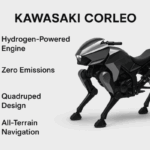In the 18th and 19th century the English upper class frequently visited the European continent in a ritual that became known as the Grand Tour. Beginning with a cross-Channel boat trip they would alight in France, the Netherlands or Belgium and then proceed to all the great cities and grand sights of Europe. Sometimes a Grand Tour could stretch to a year. For the young upper class doing the Grand Tour was a coming of age.
In the late 20th century NASA conceived of a different Grand Tour. A wonderful confluence of planetary alignment became the motivator to develop technology and a plan to rendezvous with Jupiter, Saturn, Uranus and Neptune. This Solar System confluence occurs every 176 years and was going to happen in 1977. So NASA began planning in the 1960s to meet the objective of doing a Grand Tour of the outer planets of the Solar System. To do this NASA needed to work some things out.
- NASA had to develop materials, systems and power technology capable of enduring a multi-year trip.
- NASA had to create a robotic spacecraft capable of functioning in the cold of deep space for a prolonged period.
- NASA needed to develop autonomous robotic intelligence so that the spacecraft could operate on its own when not in communication with Earth ground stations.
- NASA needed a deep space communication network with a continuous uplink to the spacecraft as it made its way to the planets.
- NASA needed to be able to generate detailed images of planets and moons in variable light conditions far away from the Sun.
- And NASA needed to work out the mathematics and calculations to rendezvous with four planets while using the gravity of each to help it get from one to another.
Before launching its Grand Tour NASA had to test the technology it was developing. It did this through an interim mission involving two spacecraft, Pioneer-10 and Pioneer-11. Both were highly successful in reaching Jupiter and Saturn.
Getting to Jupiter and Saturn
A space mission to Jupiter bears little resemblance to one going to Mars. Mars is 227 million kilometers from the Sun. Earth is 150 million as a comparison. We use the distance of the Earth from the Sun as a measure we call an Astronomical Unit or AU. So Mars is 1.5 AU from the Sun. Jupiter on the other hand is 5.2 AU from the Sun.
To go from Earth to Jupiter you have to calculate where Jupiter is in its orbit related to Earth. That distance can be as close as 628 million kilometers or as far away as 928 million. Pioneer-10 launched on March 2, 1972. It was atop a three-stage Atlas-Centaur rocket with the third stage providing added thrust to achieve an escape speed of 52,000 kilometers (32,400 miles) per hour making it the fastest human-built object of its time. It passed the Moon in 11 hours and crossed the orbit of Mars in 12 weeks. A month later on April 6 Pioneer-11 followed.
NASA built both spacecraft using aluminum with boron-epoxy tubes. The instrument payloads included attitude controllers using radio beacons to maintain direction, television cameras for taking pictures of the planets, magnetometers, plasma analyzers, charged particle. ionizing and micro-meteoroid detectors, photometers, radiometers, photopolarimeter and transmission equipment to send telemetry and photographs to an Earth-based Deep Space Network of communication stations located in California, Spain and Australia. Both craft used hydrazine propulsion thrusters, silver-cadmium batteries and a Radioisotope Thermoelectric Generator (RTG). The RTG used thermocouples to convert heat to electricity from the radioactive decay of plutonium.
Neither spacecraft were large weighing approximately 260 kilograms (570 pounds). Both spacecraft carried a gold plaque on which information was inscribed about their origin.
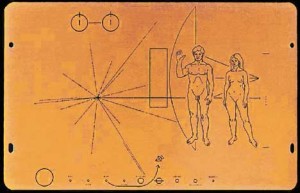
Pioneer-10 was first to traverse the Asteroid Belt between Mars and Jupiter. With that success Pioneer-11 was instructed to fire its thrusters to increase velocity and change its aiming point so that Jupiter’s gravity would assist it in going on to Saturn.
Although Pioneer-10 was first to be launched it arrived at Jupiter, the first week of December 1974, a day after Pioneer-11. Both spacecraft relayed data and images about the Jovian system, its moons, magnetic field, and the presence of the solar wind. Pioneer-10 came within 130,000 kilometers (81,000 miles) of the planet’s cloud top. Pioneer-11 was even closer, just 43,000 kilometers (26,725 miles) above Jupiter’s clouds. That close approach increased the spacecraft’s speed to 173,000 kilometers (108,000 miles) per hour taking it the next 2.4 billion kilometers (1.5 billion miles) to rendezvous with Saturn.
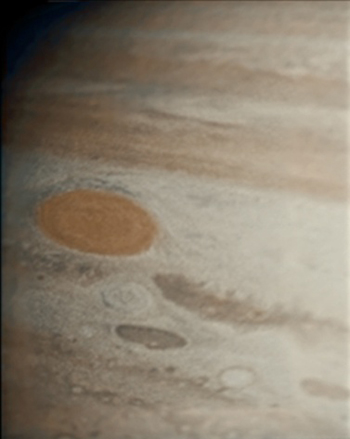
Pioneer-11 reached Saturn on September 1, 1979 passing within 20,800 kilometers (13,000 miles) of the planet and sending back remarkable pictures that included the rings. Pioneer-11 discovered two Saturnine moons and an additional ring while studying the planet’s magnetosphere.
Both spacecraft continued to operate well beyond the completion of their primary missions with Pioneer-11 studying interplanetary space until the mid-1990s, and Pioneer-10 transmitting past the year 2000. In these two robotic spacecraft NASA had proven it could build reliable technology for the Grand Tour that soon was to follow.
The Grand Tour
For the Grand Tour NASA built two of the most complex unmanned spacecraft ever designed. Dubbed Voyager-1 and 2, the latter was launched first on August 20, 1977 aboard a Titan-Centaur rocket. Voyager-1 followed on September 5 but it was launched on a faster, shorter trajectory to have it arrive at Jupiter first.
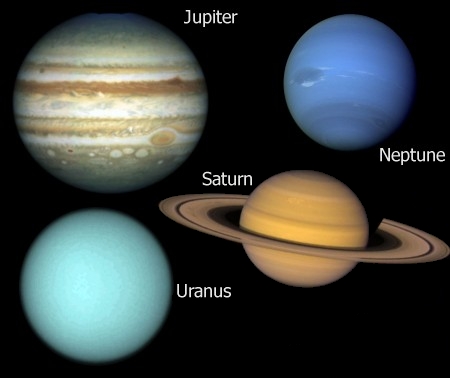
Like their predecessors reliability over a long-duration flight meant the spacecraft would need to detect and react to internal problems without human intervention. This required the development of on-board artificial intelligence. Instrumentation included high-gain antennas, detectors of all kinds to conduct 10 different experiments, and television cameras. Both spacecraft used RTGs similar to those on Pioneer-10 and 11. They each weighed about 800 kilograms (1, 760 pounds).
Voyager-1 arrived at Jupiter on March 5, 1979. Voyager-2 followed on July 9. Voyager-1 reached Saturn on November 12, 1980 followed by Voyager-2 on August 25, 1981. The trajectory of Voyager-1 took it close to Saturn’s largest moon, Titan. The trajectory made it impossible for the spacecraft to rendezvous with Uranus and Neptune. But Voyager-2’s trajectory positioned it well for a flight to the two remaining gas giants beyond arriving at Uranus in January of 1986, and Neptune in August of 1989.
What did the two spacecraft discover? The list of firsts is amazing:
- 22 new moons including: 3 at Jupiter, 3 at Saturn, 10 at Uranus and 6 at Neptune
- Jupiter’s rings and additional information on the rings of Saturn, Uranus and Neptune
- The magnetosphere of both Uranus and Neptune
- Volcanoes on Jupiter’s Moon, Io
- Geysers on Neptune’s Moon, Triton
- Auroras on Jupiter, Saturn, Uranus and Neptune
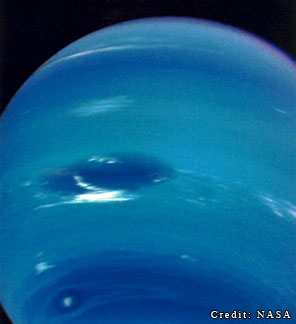
Together the two spacecraft visited more worlds than any previous spacecraft. And to this day they continue to operate, an incredible technological design achievement. As of February 2012, 35 years after launch, Voyager-1 continues to transmit data to Earth from a distance of 17.9 billion kilometers (11.1 billion miles) from the Sun, the farthest a human-made object has ever travelled. On a different trajectory Voyager-2 in February reached 14.6 billion kilometers ( 9.05 billion miles).
No voyage of human discovery has ever equalled the two Voyager missions.







